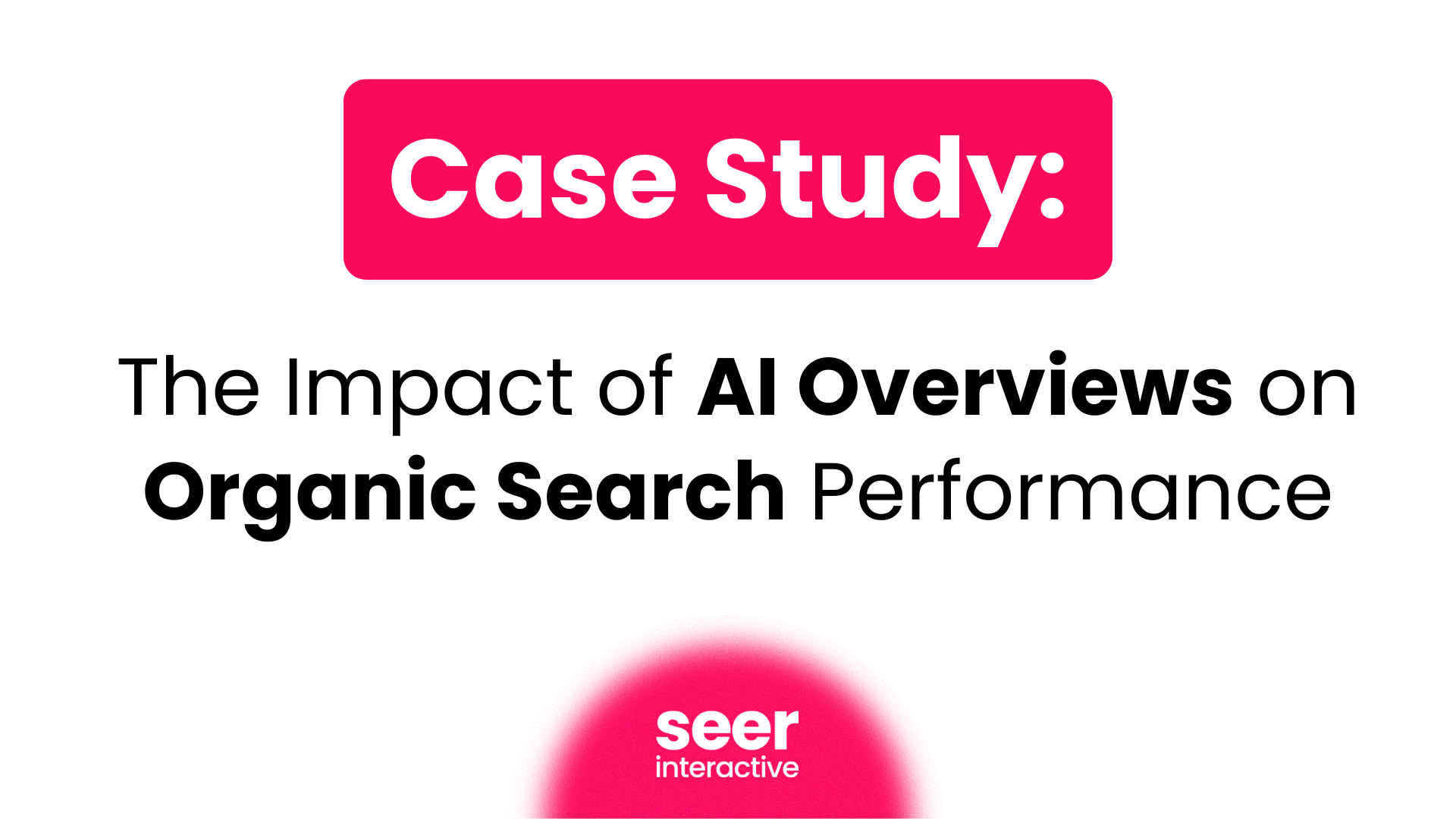In February, we explored when you should care about AI Overviews (AIOs). The guidance? Don’t panic unless they’re impacting performance. In which case still don’t panic, but DO spend time looking at the data to plan your next move.
With the introductions of AIOs, teams are still having a tough time prioritizing, and when you see traffic and CTRs tanking, it’s easy to want to dig in and plug the hole. But the best question to ground your team in is not: “where are AIOs showing up?” it’s not even “where are they stealing traffic?”, it’s “where are AIOs taking away from converting terms?” In other words: where are AIOs having material impact on revenue?
With a full quarter of data behind us, we’re seeing new patterns emerge, especially in how AIOs behave by industry and query type.
Here’s what’s changing, what’s holding steady, and what to do about it.
AIO Volatility is High, Does that Signal Risk?
Here’s what we’re seeing:
From January through March, the presence of AIOs in the SERP has seen fluctuations. February saw a significant drop in AIO volume, but it rose again in March, exceeding the original January level.
Here are the facts:
These fluctuations signal that AIO coverage is still being tested, especially on high-intent queries that matter most to performance. What dipped one month, may surge the next. Patterns are still early-days, continuing to evolve. So what does that mean for the marketer? 
Here’s why it matters:
First, this reinforces the importance of monitoring ongoing change and not overcorrecting in any given month. We expect AIOs are here to stay, especially in impacted industries. Focus on the ones appearing on converting terms and monitor their click-through rate over time. That’s the leading indicator of whether AIOs are siphoning value from your paid and organic strategy.
Impacted? Here’s your next step: Build a watchlist of your top converting terms that now show AIOs, and track their CTR trendlines (here’s how.).
Impacted Industries Maintain
The industries most frequently encountering AIOs have stayed consistent, but how that presence plays out is shifting in important ways.
- Education
This vertical is seeing significant impact. In our education data alone, we’re seeing 13% of terms that converted in paid, now triggering AIOs. AIOs are showing up for converting terms related to program research, like searches for “best [type] program.” These are high-intent, comparison-driven queries. And those AIOs are capturing important visibility. - Software/SaaS
Head terms continue to be impacted, but long-tail queries were observed as well— especially recommendation-style searches like “best [solution] for [industry]” or “good [solution] software for small teams.” These nuanced long-tail queries are often rich with intent and conversion potential, so it’s important to see how your data is being impacted if you’re in SaaS. - Healthcare
This industry continues to see a high volume of AIO appearances, but they tend to show up for broad research terms, like users interested in disease overviews or symptoms. However, we are seeing “treatment” related search terms, so check your specific CTR performance to see if your conversion-driving terms are being affected. - Ecommerce
Ecommerce continues to see the lowest impact of AI Overviews on their search terms. This is great news for brands. You already have a lot of SERP noise to deal with.

What’s Actually Triggering AI Overviews in Search?
We’re identifying patterns and trends based on the search terms that have AI Overviews showing on SERPs. Unsurprisingly, AIOs show up heavily for broad, top-of-funnel queries — especially those that are educational or exploratory in nature. But we're also seeing strong signals for more specific queries that still sit high in the funnel. A few themes stand out:

These types of queries — broad enough for generative content, specific enough to hint at intent — are a sweet spot for AIOs.
Reminder: Don’t Panic — Stay Grounded in Performance
One of the strongest takeaways from this quarter? Our original thesis holds: just because AIOs are present doesn’t mean they’re impacting your business.
Here’s what matters:
- Which of your converting queries are affected?
- Are you seeing performance shifts (both related to traditional search engine performance and AI search platforms)?
- Are you noticing user behavioral changes for your industry?
It’s easy to get distracted by surface-level shifts. But the real work (and opportunity!) lies in connecting AI Overview presence with revenue-impacting behavior.
And if your data shows signs of real impact, it’s time to go deeper. Wil’s breakdown on Answer Optimization vs. SEO and this intro to Generative Engine Optimization (GEO) are great places to start.

